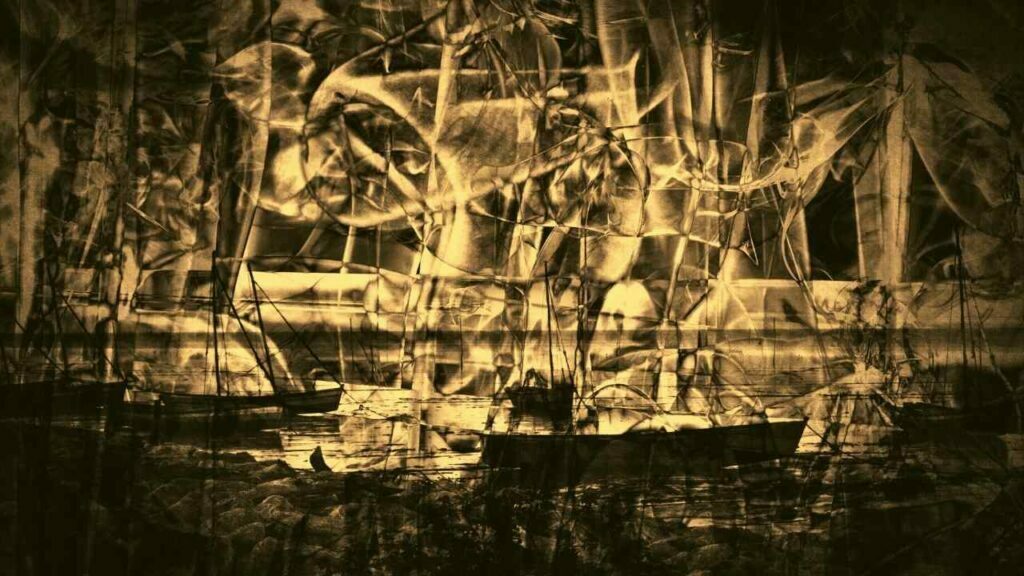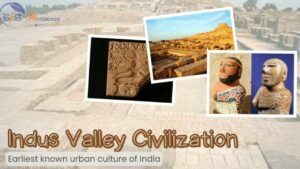El dorado the city of gold- Exploring the Legendary City
El Dorado, the City of Gold, has been the subject of fascination, speculation, and myth for centuries. The legend of El Dorado originated in South America and has captured the imagination of explorers, treasure hunters, and adventurers around the world. The myth of the golden city has been a source of inspiration for writers, filmmakers, and artists, fueling their creativity and imagination.
El dorado the city of gold
El Dorado, or the golden man, was believed to be a ruler of a powerful indigenous tribe in South America. The legend states that the king would cover himself in gold dust and dive into a sacred lake to cleanse himself of the gold. The gold dust would settle at the bottom of the lake, and the people believed that the gold was a gift from the gods.
The Origin of the Legend of El Dorado
The legend of El Dorado has its origins in the culture and traditions of the indigenous people of South America, particularly the Muisca people of present-day Colombia. According to their belief system, the Muisca had a ritual where the tribal leader, or the Zipa, would cover himself in gold dust and then immerse himself in a sacred lake Guatavita. The Muisca believed that this ritual symbolized the leader’s purification and his divine connection with the gods.
The Spanish conquest of South America in the 16th century brought the myth of El Dorado to the attention of the rest of the world. The Spanish explorers heard tales of a golden city ruled by a powerful indigenous king and began to search for this fabled city of gold. The myth of El Dorado became even more popular in Europe when a German explorer named Nikolaus Federmann returned from South America with stories of a rich kingdom he had visited called “Eldorado.” The name Eldorado, which means “the gilded one” in Spanish, was later used to refer to the legendary city of gold.
The search for this legendary city became an obsession for many explorers and adventurers, and it led to several expeditions and conquests. One of the most famous of these was led by the Spanish conquistador Gonzalo Jiménez de Quesada, who set out to find the legendary city in 1536. Quesada and his men traveled through the rugged Andes mountains and the dense jungles of the Amazon, encountering fierce resistance from the indigenous tribes they encountered. Despite their efforts, they never found the city of gold.
Over the centuries, the legend of El Dorado has continued to capture the imagination of people around the world, inspiring countless works of literature, art, and film. While the existence of the city of gold remains a mystery, the legend of El Dorado lives on as a symbol of the quest for riches and adventure.

The Search for El Dorado - Lost City of Z
The legend of El Dorado the city of gold, has inspired numerous explorers and adventurers throughout history to undertake perilous journeys into the uncharted territories of South America. The search for this fabled Lost City of Z has been the focus of many expeditions, some of which have ended in tragedy and others in triumph.
One of the earliest attempts to find the lost city was made by the Spanish explorer Gonzalo Pizarro in 1541. Pizarro, the brother of Francisco Pizarro, who had conquered the Inca Empire, led an expedition of 340 men into the Amazon basin in search of the legendary city of gold. However, after several months of arduous trekking through the dense jungle, Pizarro’s men were beset by hunger, disease, and hostile tribes. Eventually, they were forced to turn back, having found no trace of the city of gold.
Another famous expedition in search of the lost city of Z was led by Sir Walter Raleigh, the English explorer and poet, in 1595. Raleigh sailed up the Orinoco River in what is now Venezuela, accompanied by his son and a group of 100 men. They hoped to find the city of gold, but they were also looking for a route to the Pacific Ocean, which they believed was just beyond the mountains. However, the expedition was plagued by disease, hunger, and attacks by hostile tribes, and Raleigh’s son was killed in one of these skirmishes. Raleigh returned to England empty-handed, having failed to find either El Dorado or a passage to the Pacific.
In the 18th and 19th centuries, the search for El Dorado continued, with expeditions led by explorers such as Alexander von Humboldt, Francisco de Orellana, and Charles-Marie de La Condamine. These explorers made important scientific discoveries, but they never found the city of gold. The search for El Dorado gradually faded in the 20th century, as the Amazon basin became better explored and the myth of the city of gold lost some of its allure.
Despite the many failed attempts to find El Dorado, the legend of the city of gold continues to captivate the imaginations of adventurers and dreamers around the world. The search for El Dorado , Lost City of Z, represents the quest for the unknown and the desire to discover something magical and extraordinary. It is a reminder that, even in the modern age, there are still mysteries and wonders waiting to be uncovered.

The Mysteries of El Dorado - Secrets and Hidden Treasures
The legend of El Dorado, the city of gold, has fascinated people for centuries, and it is still shrouded in mystery and intrigue. Many questions remain unanswered about this legendary city, such as whether it ever truly existed, and if so, where it was located and what treasures it contained.
The Lost City of Z
One of the greatest mysteries surrounding El Dorado is its exact location. The legend of El dorado originated with the Muisca people of present-day Colombia, who believed that their tribal leader, or Zipa, would cover himself in gold dust and then immerse himself in a sacred lake called Guatavita. While historians and archaeologists have identified the location of Guatavita, the actual city of gold remains elusive.
There are numerous theories about where El Dorado might be located. Some historians believe that the city of gold was located in the Amazon basin, while others think it was in the Andes mountains. Still others speculate that El Dorado was a metaphorical rather than a literal city, representing the promise of wealth and prosperity rather than an actual place.
The Curse of the Golden City
The legend of El Dorado and the search for the golden city has long been associated with tales of curses and tragedy. From the conquistadors who sought to plunder the city’s riches to the modern-day adventurers who search for its lost treasures, many have claimed to have fallen victim to the curse of the golden city.
One of the most famous examples of the curse of El Dorado is the fate of the Spanish conquistador Gonzalo Pizarro. In 1541, Pizarro set out on an expedition to find the city of gold, but his party was plagued by disease, starvation, and attacks from hostile indigenous peoples. The expedition ultimately ended in disaster, with Pizarro and his men dying in the jungle.
Another famous example is the curse of the Hope Diamond, a large blue diamond that was supposedly looted from the city of gold. Legend has it that those who possess the diamond will suffer misfortune and tragedy. While the diamond has been owned by numerous individuals over the centuries, many of them did in fact experience misfortune, leading some to believe in the curse.
Even modern-day adventurers who search for the lost city of El Dorado have reported strange occurrences and bad luck. Some have claimed to have been followed by shadowy figures or have experienced unexplained accidents and injuries. While these stories are often dismissed as superstition or coincidence, they continue to add to the mystique and allure of the legend of the golden city.
Despite the tales of curses and tragedy, the search for this lost city and its lost treasures continues to captivate adventurers and explorers. While the reality of the city’s existence remains elusive, the legend and the curse of the golden city continue to live on.

In recent years, archaeologists have made some intriguing discoveries that shed light on the legend of this lost city. In 2017, for example, researchers found evidence of a vast network of roads and settlements in the Amazon basin that suggest a sophisticated civilization once flourished there. The discovery has led some experts to speculate that El Dorado may have been a real city after all, and that its riches were simply hidden beneath the jungle canopy.
Despite the many unanswered questions about El Dorado, the legend of the city of gold continues to captivate the imaginations of people around the world. It is a reminder that there are still mysteries waiting to be solved, and that the quest for knowledge and discovery is a never-ending one. Whether or not El Dorado ever truly existed, its legacy lives on as a symbol of the human desire for adventure, wealth, and the unknown.
The Legacy of El Dorado - Impact on Culture and Society
The legend of El Dorado, the city of gold, has had a significant impact on culture and society throughout history. From inspiring expeditions and adventures to influencing art, literature, and even modern pop culture, the legacy of the lost city continues to be felt today.
One of the most significant impacts of this lost city is its influence on exploration and discovery. The legend of the city of gold spurred numerous expeditions and conquests in the New World, with many explorers hoping to discover its riches. While the search for this legendary city ultimately proved fruitless, it helped to open up new lands and territories, paving the way for further exploration and colonization.
The story of the lost city of Z has also had a lasting impact on art and literature. Countless works of art and literature have been inspired by the legend, from paintings and sculptures to novels and films. The idea of a city filled with gold and treasures captured the imaginations of artists and writers, and continues to do so today.
Perhaps one of the most unexpected legacies of it is its influence on modern pop culture. From video games to music, the legend of the city of gold has found its way into numerous forms of entertainment. For example, the popular video game series “Uncharted” features a protagonist named Nathan Drake who is on a quest to discover the lost city of El Dorado.
Despite the many ways in which El Dorado has influenced culture and society, the legend also has its detractors. Some argue that the search for El Dorado and other mythical cities led to the exploitation and mistreatment of indigenous peoples. Others argue that the legend perpetuates harmful stereotypes about the Americas as a place of untold riches waiting to be plundered.
Regardless of one’s stance on the legacy of El Dorado, there is no denying its impact on history and culture. It remains a powerful symbol of the human desire for adventure, wealth, and the unknown, and continues to inspire new generations to explore and discover.
Frequently Asked Questions (FAQs)
The existence of El Dorado as a real city is still a matter of speculation and debate. Some believe that the legend of the golden city was based on the Muisca capital of Bacatá, while others think it was purely a myth.
No, El Dorado has never been found. However, many expeditions have been undertaken in search of the city of gold, and some have discovered other treasures and artifacts.
The curse of El Dorado is a legend that has been associated with the mythical city of gold, believed to be located somewhere in South America. The curse is said to bring misfortune and tragedy to those who seek the lost city and its treasures. Many expeditions ended in disaster, with the explorers falling victim to disease, starvation, attacks from hostile indigenous peoples, or natural disasters.
El Dorado is known as the city of gold because it is a legendary city believed to be filled with vast quantities of gold and precious treasures. The name El Dorado is Spanish for “the gilded one,” and is said to have originated from a Muisca ritual in which the chief of the tribe covered himself in gold dust and submerged himself in a sacred lake as a symbol of wealth and power.
The location of the lost city of El Dorado, also known as the city of gold, remains a mystery to this day. The legend of El Dorado originated in South America, and it was said to be located somewhere in the vast Amazon rainforest.




